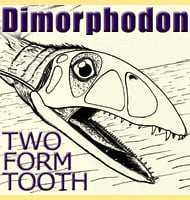In Depth
Sphenacanthus is a genus of xenacanthid shark that has a known temporal range stretching from the late Devonian period all the way to the late Permian. Sphenacanthus is believed to have been a freshwater shark that inhabited waterways and swamps were individuals likely hunted for fish, other smaller sharks and possibly amphibians such as temnospondyls, particularly smaller individuals and juveniles still in their larval stages.
Sphenacanthus is so far not known past the Permain/Triassic boundary, possibly suggesting that the genus died out during the extinction event at this time, one that was so bad, that more animals died out here than what happened during the KT extinction sixty-five million years ago which also marked the end of dinosaurs. A reason for this could be the gradual mass drying out of the swamps caused by all of the continents slowly coming together to form the supercontinent of Pangea. However with that said, other xenacanthid sharks such as Orthacanthus and the type genus Xenacanthus are known to have survived into the Triassic.
Sphenacanthus should not be confused with the very similarly named shark Stethacanthus.
Further Reading
- Chondrichthyans from the base of the Irati Formation (Early Permian, Paran� Basin), S�o Paulo, Brazil - A. Chahud, T. R. Fairchild & S. Petri - 2010. - A new species of sphenacanthid (Chondrichthyes, Elasmobranchii) from the Rio do Rasto Formation (Paran� basin), southern Brazil - V. E. Pauliv, E. V. Dias & F. A. Sedor - 2012.







